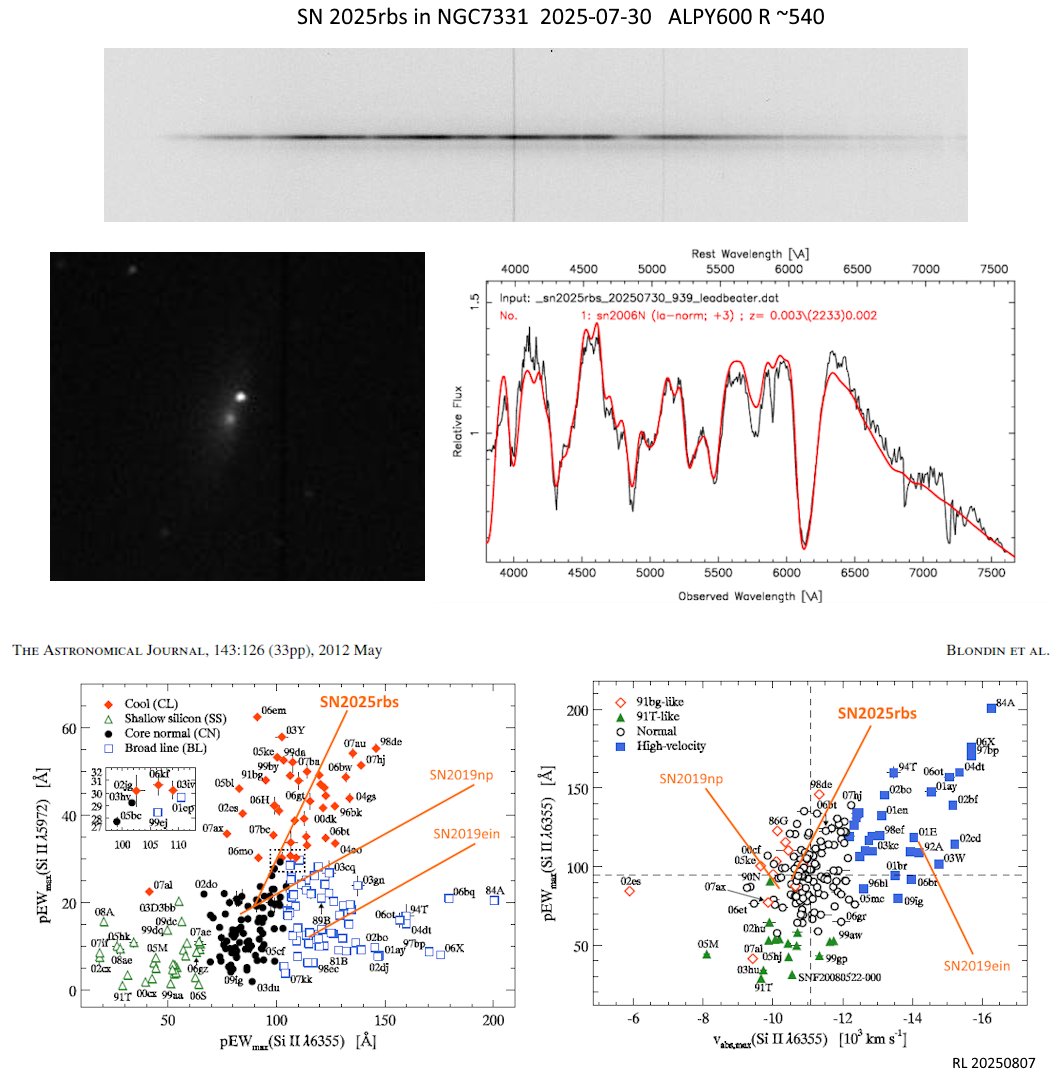(To view full size, open in new tab)
Despite being “Standard Candles”, not all type Ia supernovae are identical in behaviour. Spectra taken at maximum (and the shape of the light curve) can be used to further classify them. Spectroscopically SN 2025rbs appears to be very typical.
Top – Raw spectrum image from ALPY 600 spectrograph (6 x 600s)
Middle left – Cropped image from spectrograph guider (5x10sec). The image brightness is linear, with the supernova unsaturated so unlike most astro-images of this object, it shows the true brightness of the supernova relative to the galaxy. (Approximately 10% of the total light from the galaxy is from the supernova)
Middle right – Measured spectrum (black) overlaid on the best match template from the supernova identification program SNID (red) – A near perfect match. (The features beyond 6700 A are Telluric bands from Earth’s atmosphere). Note the narrow absorption line at ~5900A which is stronger here compared with the template. This is the Sodium D line and is predominantly from interstellar dust in the host galaxy in front of the supernova (The red-shift matches that of NGC7331). The apparent brightness of the supernova would need to be corrected for this extinction before it could be used to estimate the distance to NGC7331.
Bottom – Spectral characteristics overlaid on Blondin et al fig 8
Left – The relative strengths (Equivalent Width) of the Si II 5972,6355 absorption lines at maximum brightness (here significantly net blue-shifted by the high velocity of the explosion) can be used to classify the supernova according to the scheme proposed by Branch et al.
Right – According to Wang et al , different sub types of type Ia supernovae can be differentiated by the velocity and EW of the Si II 6355 line at maximum
(These graphs also show examples of two previous supernovae SN 2019np, SN2019ein classified in the same way from spectra taken with the same equipment)
All spectra are available from the BAA spectroscopy database
edited 20250809 typo


